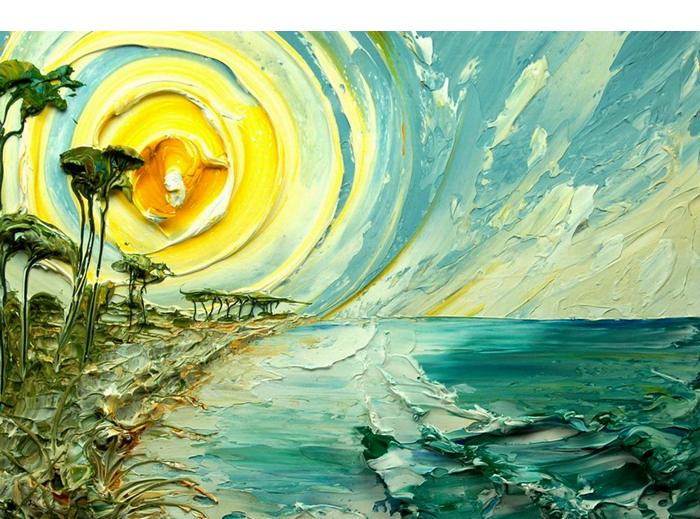
5 Important Drawing and Painting Mistakes Artists Make!
Contents:
5 Important Drawing and Painting Mistakes Artists Make!
This post might be a big disappointment for you, or make you think about the work you've done so far. The entry is mainly dedicated to young artists who have little experience in drawing and painting and still want to learn how to draw and draw correctly.
I personally made such mistakes myself and I know that this is the wrong way. The entry is certainly not intended to discourage you from creating or offend your work.
In my opinion, everyone started this way (for better or worse) and such mistakes are natural. It is important to realize this and not make such mistakes again.
1. Rub the drawing with your finger
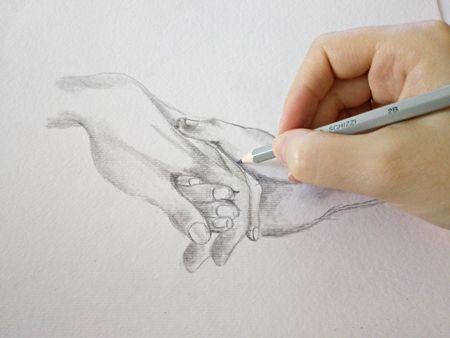 This is perhaps the most common method for shading details among beginner artists. It is sad for me that I have been shading my fingers for a very long time and unfortunately did not receive any knowledge about this from the outside.
This is perhaps the most common method for shading details among beginner artists. It is sad for me that I have been shading my fingers for a very long time and unfortunately did not receive any knowledge about this from the outside.
Only over the years, when I started watching drawing lessons on the Internet, reading books on drawing and when I started attending master classes, I realized that only preschoolers play with their fingers while drawing.
It was very painful, because I finally managed to create so many beautiful (even realistic) finger drawings, and BOOM! Why can't you rub a pencil with your fingers?
First, it's not aesthetically pleasing. We should never touch our works with our fingers. Of course, sometimes there is a temptation to rub something, but this is not an option!
Fingers leave greasy spots on the drawing, which is why our work looks ugly. In addition, even if we maintain XNUMX% aesthetics and gently rub the drawing with a finger so as not to leave dirt, this practice will become a habit for us, and then - with large format or detailed drawings, this finger will not work for us, and we will look for others. methods of rubbing graphite pencil.
I don't know how you feel about drawing. If you just want to draw for fun and have fun like in kindergarten, that's fine. On the other hand, if you're serious about your drawings and want to draw beautifully, don't use your fingers to smudge your work.
By the way, I know people who have been making drawings to order for many years and still rub parts of the drawing with their fingers. Moreover, they shoot a video about it and pass it on. Therefore, be vigilant and choose good study materials on the Internet.
Honestly? I would not want to buy a drawing that will rub against someone's finger.
I wrote about 3 sources worth studying for drawing and painting. Watch, how to learn to draw?
Once I was looking for an answer to the question, according to the rules of drawing, only a pencil is used for shading, or can other tools be used?
The most common answer was that, theoretically, a drawing consists of a certain number of lines (Wikipedia: composition of lines drawn on a plane (...)), while according to preferences and techniques, people use different tools (washing machine, blender, bread eraseretc.) to emphasize some value, but never use your fingers for this ...
2. Unmodified pencils and dirty brushes
Another mistake known among artists is the use of uncolored pencils or paint-stained brushes. When it comes to pencils, I do not mean the moment when we are in the middle of work and draw on the go with an unsharpened pencil.
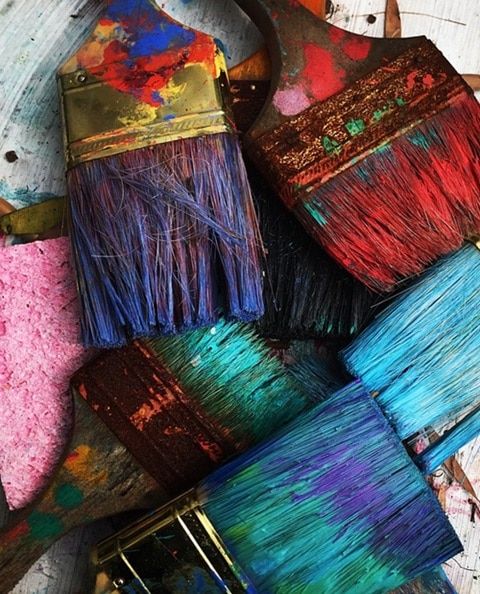 I mean the moment when we start to draw and deliberately pick up a pencil completely unprepared for work. Unfortunately, this happens quite often with novice cartoonists, and I know from my own experience that this issue needs to be closely monitored.
I mean the moment when we start to draw and deliberately pick up a pencil completely unprepared for work. Unfortunately, this happens quite often with novice cartoonists, and I know from my own experience that this issue needs to be closely monitored.
The best solution is to simply use a pencil cutter. Unlike a sharpener, with a knife we will find most of the pencil's graphite and with a sharpened pencil we can draw longer.
Remember that even if we are drawing very general elements of the drawing, the pencil must be sharpened to the point. However, when it comes to detail, you don't have the ability to make precise details with an unsharpened pencil. So don't expect beautiful results from unhardened pencils.
The same goes for dirty brushes when painting with paints. Brushes should be washed thoroughly after use. Otherwise, the paint will dry on the bristles of the brush. And then it will be difficult to prepare such a brush for the next job.
Remember that if you don't wash and dry your brushes, the bristles will fall out, crumble, and the brushes will be thrown away altogether. Don't paint with dirty brushes.
Brushes must be clean, that is, without paint residues. If you are using nylon brushes, it may happen that the paint stains the bristles of your brush and even after a thorough wash, the color will not come off. Don't worry about it, because such situations happen, and dyed bristles do not spoil our image in any way.
3. Do not mix colors on the palette
Have you ever transferred paint onto canvas directly from a tube or cube? For example, I was too lazy to pick up paint from a tube on a brush without using a palette. It's hard to admit, but it was true, and so I warn you never to do it.
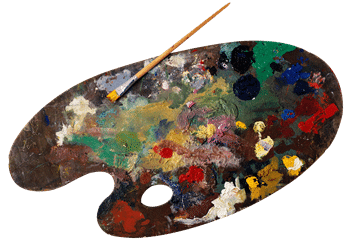
Once at a watercolor workshop, one of the teachers said that paints should always be mixed before applying them to paper, canvas, etc.
In painting, there is no practice of applying pure color from a tube. But what if we want to get 100% pure titanium white in the image, for example? In my opinion, realistic pure colors are quite difficult to find. Colors are usually mixed, such as titanium white flash, etc.
Of course, there are some abstract paintings where we will see expressive and very contrasting colors that seem pure and without impurities, but we do not learn such things at first, because then it will be difficult for us to wean ourselves from this habit.
4. Paintings and drawings without sketches
In the beginning of drawing and painting, it often happened that I wanted to make quick, simple and beautiful drawings. I thought it was a waste of time to sketch since I can draw a realistic shape right away.
And in the case of, for example, portraits, instead of starting with a block, then placing individual parts of the face in the right place, I started with a detailed drawing of the eyes, mouth, nose. In the end, I always left the hair, because then it seemed very difficult for me to draw them.
As for the paintings, my main mistake was that I did not have a compositional plan. I had a vision in my head, but I thought it would all come out. And this is the main mistake, because when we start painting pictures, we have to start with a sketch.
The more detailed the picture, the larger the sketch we will make. Before drawing, you should draw the horizon, measure the perspective correctly, note where the light and shadow should fall, you should also draw the general elements in the picture, etc.
Sketching, for example, a sunset landscape, where the main element of the picture is the sky and water, will take us very little time. On the other hand, painting a picture on an urban theme, where some buildings, greenery, etc. predominate, requires more time and patience.
Successful drawing and painting is when you make a good sketch. We must have a base on which we will work, otherwise we will not be able to just draw on the go, observing, for example, the principle of proportion.
5. Drawing and coloring from memory
On the one hand, drawing and drawing from memory is cool because we express our feelings, we want to present our creative vision and, above all, relax and stimulate our creativity.
On the other hand, I'm sorry to say that in the beginning you won't learn anything by drawing and painting from memory. My mistake, reproducible for at least 1,5 years, was that I took a piece of paper, a pencil and drew from my head.
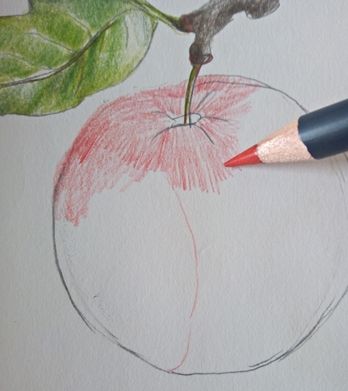 Such a creation from memory is admirable, if you have done it before, I think you have heard the opinion “Wow, this is cool. How did you do that?" or if you are drawing a portrait from memory, you will probably be asked “who is this? Did you draw from memory or from a photo?
Such a creation from memory is admirable, if you have done it before, I think you have heard the opinion “Wow, this is cool. How did you do that?" or if you are drawing a portrait from memory, you will probably be asked “who is this? Did you draw from memory or from a photo?
I will write you honestly that I did not like to answer such questions from my audience. For example, I did not know who was depicted in this portrait (because I drew from memory), and two, if I managed to draw someone from memory (for example, my sister), such questions discouraged further drawing. I then thought to myself: “How can this be? Does not look like it? Why are they asking me this? You can see who it is with the naked eye!
I also think that drawing and coloring from memory allows you to test your own knowledge, test your skills and determine what level you are at.
Do you remember when you learned to type on a computer or laptop keyboard? Surely you had to look at the keyboard from time to time to make sure that we are pressing the correct key. A few months later everything works like clockwork.
We look at the monitor and without looking we press the keys faster and faster. What if we start typing without looking at the keyboard? There will definitely be typos.
Similarly, with a drawing - if every day we draw trees or an eye from nature, from a photo, then, without looking at the original, our drawing will be beautiful, proportional and realistic.
So people who know drawing and painting should learn the basics and preferably draw from nature, sometimes also from a photograph. Drawing and coloring from memory without prior practice should be left to children or amateurs for a pleasant pastime.
Leave a Reply